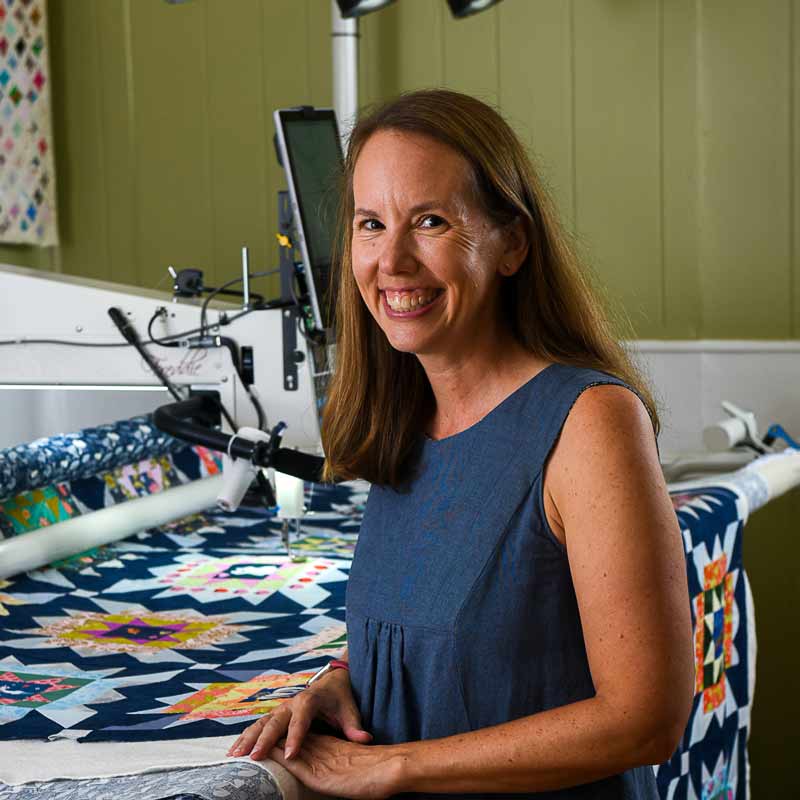Let's Connect!
If you have any questions about my services or would like to contact me for help on your quilting project, please reach out using the buttons below. I look forward to hearing from you!
Quilting Request Form
Ready to send your quilt in for longarming? Fill out the form below (including the math problem at the end to prove you’re not a robot) and I’ll get in touch. Once submitted, you’ll receive an email with shipping instructions or local drop-off info.
Sales Tax Notice: 7% NC sales tax will be included on your invoice as required by state law.
Preparing a Quilt for the Longarm
TOP:
Press your top as flat as you possibly can. Mark your top edge if the quilt is directional. Measure the widest and longest points of your quilt top. Fold or hang over a hanger.
BACK:
Be sure your backing fabric is at least 4 inches larger than your top on all sides. When calculating your backing needs, add 8 inches to the length and the width. This is required for longarming in order to stabilize your quilt. The top and bottom edge of your backing must be as straight as possible, as this will connect your backing to the machine. If your backing is uneven, it will not load evenly on a longarm. Ripping fabric is a great option here since the distortion will not be in the quilt. 108” backings are great- leave the selvedges. Pieced backs are also great, but here are some hints for best results: when piecing, make your seam allowances larger than ¼ inch. ½ or even ¾ is great, and press all backing seams OPEN. The larger the seam allowance, the flatter you can press the seam. When the backing is loaded on the longarm, the seam will pile up on itself, creating a little hill, which can cause puckers. Also, try to piece seams horizontally and avoid vertical seams as much as possible. Horizontal seams will run along the bars, but vertical seams will stack. Fleece, flannel, and minky are great backing choices, but they have a lot of stretch, so prepare your quilt backing with the selvedge at the top and bottom. Try not to piece fleece or minky as they will create puckers in the stretch.
BATTING:
More loft hides more “personality”. Cotton is very flat. Poly adds more loft. Wool adds a lot of loft. Blends and other synthetics hit the middle range. If your batting is very fluffy, it can cause “pokeys” where the batting comes through the needle holes in the backing. These will generally wash away. Pieced batting is a great option-sew with a wide zigzag stitch, but be careful not to pull, as batting will stretch and pucker. The only batting to avoid is Warm and Natural as it contains woody pieces of the cotton boll, which can break a needle.
**A note on fabric choices: Digital Prints are lovely, but they can cause issues when longarming. When a digital print is produced, ink saturates the front of the fabric, but the back remains white. The colors do not penetrate as deeply as traditionally printed fabric. When the longarm needle strikes the weave of the digital print, it can twist the thread, so the white from the back of the fabric is visible. It appears like a run in stockings, but it is just where the thread has flipped. The only real way to correct this is to color with an archival pen after quilting is complete. You can tell if you are using a digital print by looking at the selvedge- if the fabric has the color dots, it’s traditional. If the dots aren’t present, chances are you have a digital print. Darker colors are more prone to showing the “runs” or white lines. **
Frequently Asked Questions
How should I prepare my quilt?
Start with my Quilt Preparation Guide, which includes step-by-step instructions on pressing, folding, and sizing.
What is the largest quilt you can accept?
Quilt tops must be 98” or smaller on the short side.
What machine do you use?
I quilt on an APQS Freddie with Intelliquilter.
My quilt has wavy borders or quirky seams—can you help?
Absolutely. Quilts have personality! I’ll ease in borders or add small tucks as needed, and I’ll always call before making changes.
Do you have a minimum charge?
Nope! I quilt projects of all sizes.
What if you don’t have the design I want?
I’m happy to split the cost of purchasing a new edge-to-edge design. Most range from $12–$18.
What’s your turnaround time?
My typical turnaround is two weeks, not including shipping.
Still have questions? Contact me—I’d be happy to talk you through the process.
